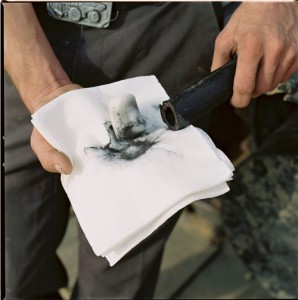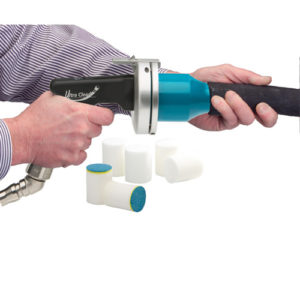Contributed by Derek Davis, Ultra Clean Technologies Corp.

It may seem like a strange comparison, but a common kitchen tip my mother taught me when I was young applies to hydraulics. I used to wonder why she would wash newly purchased dishes before she put them away. That seemed kind of silly to me at the time because, after all, they were brand new! But when I asked her why she did that she stated matter-of-factly that, “You never know where those dishes have been!”
She was right, of course. From manufacturing to shipping to display on the store shelves, those dishes had plenty of opportunities to collect dust and germs and be handled by any number of people. The same principle applies to the fluid power industry, in particular with hydraulic hoses.
Over the years, a great deal of time and attention has been placed on the importance of keeping hydraulic oil clean. As a result, a vast number of studies and articles have been written on oil filtration. Anyone worth his or her salt now knows that oil needs to be clean to obtain optimum equipment performance. But do you know what happens to clean oil after it passes through dirty lines?
Surprisingly, comparatively little has been said about the importance of cleaning hydraulic lines. In fact, one of the most frequent comments that hose distributors make is, “The hose is new—it’s already clean!”
But this couldn’t be farther from the truth. The idea that “new” equals “clean” is a big misconception. In fact, very few hose manufacturing facilities incorporate any type of cleaning methods in their fabrication processes. Residual mandrel lubrication would be bad enough but there are multiple ways that hydraulic hose just gets dirtier and dirtier as it travels from manufacturer, to distributor, and finally, to the end user:
-

Cleaning hydraulic hose is simple with Ultra Clean’s system, which uses pneumatics to shoot a projectile through hose, catching and removing debris and contaminants. Mandrel lubricant from hose fabrication is never cleaned out at the manufacturing facility.
- Cutting a hose into smaller lengths for hose assembly generates rubber dust in the tube.
- Crimping causes “flashing” of small metal shards to break off into the line.
- Leaving a finished hose un-sealed allows air-born dust and grime to enter the line. (Or, worse, the hose gets thrown into the back of a dirty truck during transportation to the job site.)
By the time the finished product is installed onto the equipment, the amount of contamination build-up has been sufficient to ruin even the cleanest oil. Hydraulic tubing can be just as bad: bending, flaring, and de-burring all leave both visible and microscopic particles inside the line that can effectively destroy precision parts on equipment.
My mother taught me well. Today I would never dream of eating off of “new” dishes without cleaning them first. I also wouldn’t buy a new hydraulic line without getting it cleaned too. Cleaning or flushing hydraulic lines is critical to keeping your machines contamination-free. And cleaning your hose can be as simple as using pneumatics to shoot a special projectile through the hose to collect debris and contaminants. Your systems are too important not to do this.
Ultra Clean Inc.
www.ultracleantech.com

Leave a Reply